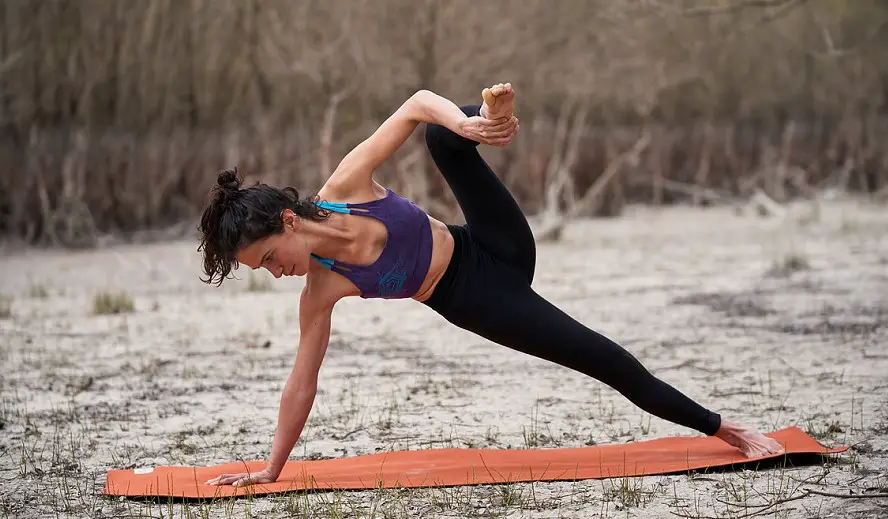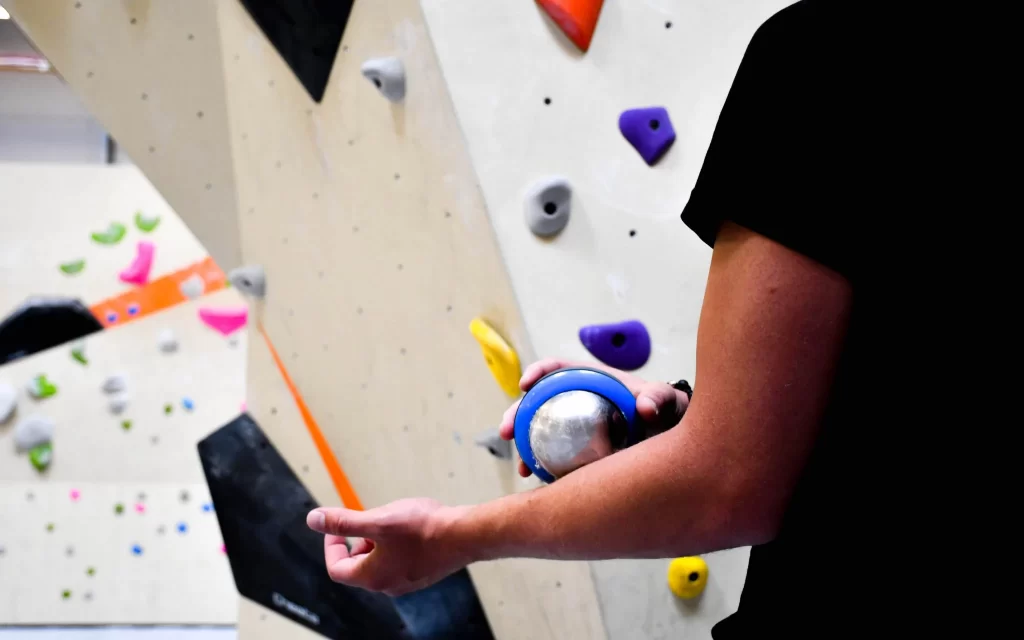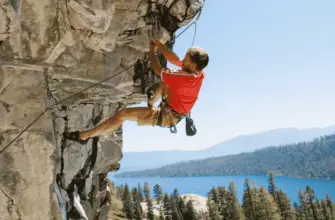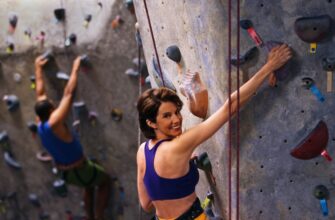It is very important to warm up well before climbing training. I want to note that climbers do not warm up very well. A lot of less capable climbers don’t take climbing warm-up very seriously, and that’s bad. Before any difficult workout, you need some exercise. It is not hard stuff.
And most outdoor athletes skip this point and immediately climb a wall or rock. But this way, you can get injured very seriously.
Any physical activity requires caution and proper execution; otherwise, unpleasant consequences will not keep you waiting. After skipping the warm-up, many climbers then complain of pain in the arms, hands, elbows, knees, calves, and so on. Many people can’t even pick up a cup of coffee! This is terrible!
The basic idea of a climbing warm-up is for blood to flow into the muscles. More blood in the muscles gives them more oxygen and nutrients to facilitate contraction. And also, the blood can warm, weaken, and moisturize the muscle tissue. Warm-up exercises should be carried out immediately before climbing the mountain.
Most climbers are too confident to do a good warm-up, and this is wrong. There is a lot of information on the Internet about proper preparation for warming up all the muscles before climbing. If you are not lazy, you will find everything that interests you.
And now I want to show the basic structure of rock climbing training for the upper body and different muscle groups to get physically warm for half an hour.

- Climbing Warm-Up. My advice
- 1. Be an athlete
- 2. Your benefits
- 3. Make your own approach
- 4. Listen to your body
- 5. Develop a proper warm-up habit
- What makes a good warm-up?
- The first step is to raise
- Rowing
- Jump-Rope
- Your Own Plan
- The second step is to activate and mobilize
- Arm Circles
- Swings
- Twists
- Lunge Play
- Leg Swings
- Forearm Stretches
- Foam Roll
- Massage with a Tennis Ball
- The third state is the possibility state
- Warm your mind up
- After a climbing session, relax
- Light cardio
- Static stretches
- Self-massage
- FAQ
- Should you warm up before climbing?
- How long should you warm up before climbing?
- Conclusion
Climbing Warm-Up. My advice
1. Be an athlete
Firstly, be an athlete. This self-awareness will help you motivate yourself for a better workout. A great warm-up is needed not only for professional athletes but also for ordinary people. If you love rock climbing, take care of your body. You will then avoid unfavorable outcomes. If you need some warm-up help, go and get it.
2. Your benefits
I don’t know why many climbers ignore the risk of injury and cannot do good warm-ups. After all, the thought of the injury itself should be the best incentive to do a nice warm-up.
A useful tip is to work with the weakest grips during warm-up lifts.
Choose basic exercises such as those requiring precise footwork, a relaxed grip, and straight arms, and try to perform them perfectly during warm-up lifts. This will help you to climb more efficiently in the future. Do not forget about exercises for movement. Thus, the probability of injury is reduced.
3. Make your own approach
Do not copy professional athletes as most climbers do. Find your level of training and warm up instinctively. “Warming up” is the process of training and preparing your body to achieve a goal. Personalize your routine. This will assist you in stopping your bad climbing.
Do the exercises you like and change them regularly. Different muscle groups need different exercises. Do stretches for better blood flow to the muscles. Work on yourself regularly. The results will not be long in coming. Be a climbing superhero!
4. Listen to your body
It may take years to develop the right tactics. You should listen to your body. If you feel tired and heavy inside, then you should pay attention to cardio training and stretching. Take your time, do exercises with even breathing and without heating, and listen to your heart rate and well-being.
5. Develop a proper warm-up habit
Everyone is wondering how long this workout will take to warm up well and not injure your body. It all depends on your level of training, endurance, the presence of bad habits, the capabilities of your body, the level of stress and fatigue, and other factors.
The main thing is to keep your balance; otherwise, with a long workout, you will get tired and not be able to hold a normal climbing session. And if the training takes no more than 20 minutes, then the risk of injury will increase. You need a better warm-up.
Ideally, you should train for at least half an hour, and the maximum training should take about an hour for experienced climbers. With age, you need more time to warm up the whole body. And warm-up works.

What makes a good warm-up?
There are 3 steps:
- Raise
- Activate and mobilize
- Possibilization
The first step is to raise
The only objective of this stage is to increase your heart rate. We only need some type of low-intensity cardiovascular activity; it doesn’t have to be sophisticated. This might be practicing your favorite dancing move or going for a run or bike ride. If the approach is relatively difficult when climbing outside, that is generally also acceptable.
Upper-body exercises will assist in preparing those areas for the latter stages of warming up. Although, it might not be simple or secure to run a few laps around your gym.
Rowing
If you have a rowing machine on your wall, this is terrific exercise. The movement resembles climbing so expertly. If it’s one of those truly chilly days, you may also begin at a low setting and increase the intensity. Sadly, not every wall has a rowing machine.
Jump-Rope
You may perform it anywhere and are not dependent on the wall’s equipment. It might take some time to learn to skip if you’ve never done it before, but I thought it was a lot of fun. I enjoy warming up by using a weighted skipping rope and doing leg swings and then starting to climb.
As long as the weight is not excessive, it still serves as an excellent warm-up. While you do your necessary warm-up, the added weight helps to strengthen your arms and shoulders. Additionally, it has been demonstrated that rowing and skipping both improve shoulder stability, which is a huge bonus for climbers.
Your Own Plan
Is there no equipment? I suppose these are easy warm-up problems. You may always make a brief circuit of bodyweight exercises to execute. Squats, push-ups, burpees, lunges, and sprinting on the spot, for example.
Do one minute of each, followed by one minute of relaxation.
One or two exercises like that, and you’ll be ready to take on the world. It’s only a warm-up, so don’t push yourself too hard.
The second step is to activate and mobilize
To improve the result, you need dynamic stretches. These exercises will not build your muscles; they cover the entire range of muscles. Dynamic stretches help bring blood to the muscles, and they also lengthen the muscles a little and allow you to increase the range of movements.
Arm Circles
The sensitive nature of the shoulder joint makes it worthwhile to spend some time putting it in working order before a session. Just begin with little circles, gradually rise to full size, and then gradually reduce before reversing direction.
Swings
These arm swings stretch out your chest. Swing your arms from the sides to the front, then to the opposite side. Then allow them to return to their previous location. You can do this with both bent and straight arms.
Twists
Bend your arms to shoulder height and twist from side to side as far as your core allows. Your feet must be securely placed so that you can aim your thorax. Another option is to lean forward and keep your legs upright. Swing one hand to contact the other foot while swinging the other hand over your head.
Lunge Play
This is a great one for the hips and legs. Get yourself into a wide squat position and then simply lean across from leg to leg, feeling around for stiffness. If you find a stiff part, bounce around on it for a few seconds before moving on. For an extra challenge, see if you can do hip circles in this position.
Leg Swings
Like the arm circles, you are using inertial force to literally force blood into the muscles on top of the normal things that are happening. Use a bit of wall if you need to balance, and then simply swing your leg backward and forward, attempting to get it as high as you can with each swing. After that, you can do side-to-side swings across your front.
Forearm Stretches
I really devote some time to this particular one and redo it several times since it produces such an impact. Start on your knees with your forearms on the floor. Then, on each lap, loop around your hands, gradually lengthening your forearms.
Then, repeat by rotating your hands so that your fingers are facing you. Flip your hands, so their sides are on the ground, and extend out the opposite direction of your forearm. Then elevate your hands off the floor while keeping your fingers in place to stretch them as well.
Foam Roll
According to some research, using a foam roller to heat up the muscles can be beneficial since it is more efficient than static and dynamic stretching at rapidly enhancing the flexibility of the quadriceps and hamstrings without compromising muscle mass.
If you have access to a foam roller, try to massage out a few important muscle groups before climbing.
However, if you roll too much, your muscles will become even more exhausted.
Massage with a Tennis Ball
Do you still need warm-up help? Rolling a tennis ball over your muscles is an alternative option to foam rolling for most climbers. Put a tennis ball between your back and the wall, and you can slide down, several of the major groups of muscles utilized in climbing.
The third state is the possibility state
At this stage, you do exercises with less intensity. Absolutely easy rock climbing is waiting for you. I think you should try low-level rock climbing for at least 20 to 30 minutes. Then, gradually, you should increase the complexity of the route.

Warm your mind up
An aspect we emphasize in our sessions is that the possibility part should include cognitive as well as muscular warm-ups. As you experiment with new motions and raise the challenge, attempt to incorporate approaches that demand thinking and accuracy. By far the most important aspect to concentrate on is movement.
When you’ve properly warmed up, your chances of getting hurt are reduced. Many devoted climbers may go through this warming-up routine at their local wall before traveling to the mountain if they desire to attempt anything challenging outdoors.
After a climbing session, relax
So, what should we do after a session when muscles are lightly contracted? The first idea that comes to mind is to have a drink, but there are several actions you can take to remove harmful poisons from your muscles, keeping them strong and prepared for the following round.
Light cardio
The very same workout (or dance sequence) as used for the warm-ups should be used, but the intensity must be reduced.
This exercise should be done at a reduced rate for 5 to 15 minutes.
This causes your heart to discharge the byproducts of energy generation from your muscles, while not encouraging them to make more.
Static stretches
This is the best time to perform a series of static stretches after a regular workout.
Self-massage
Self-massage is a great way to make your muscles as relaxed as possible after a climbing session. Don’t forget to have a rest day.

FAQ
Should you warm up before climbing?
Yes, to avoid unpleasant health consequences.
How long should you warm up before climbing?
Minimum: 30 minutes; maximum: 1 hour.
Conclusion
I hope you can see how crucial it is to practice certain workouts before climbing in order to avoid harming your body and putting yourself at risk for injury. Thank you for your time.











